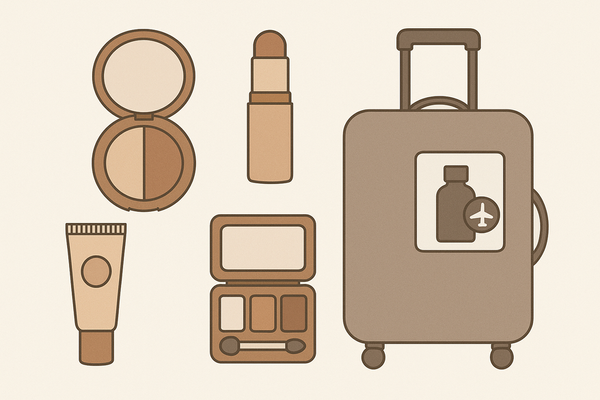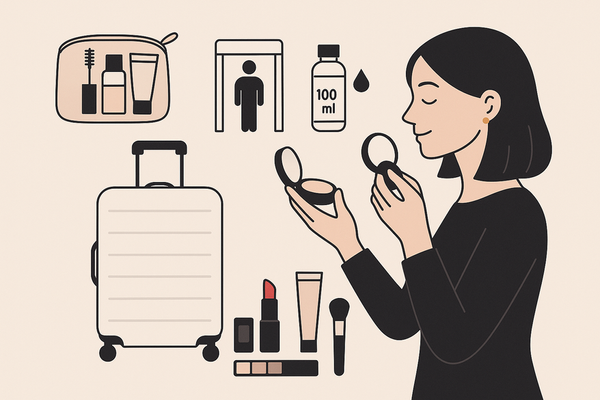The Ultimate Hypoallergenic Makeup Guide
Explore our ultimate hypoallergenic makeup guide to prevent allergies, choose safe products, and protect sensitive skin with expert advice.

Estimated reading time: 8 minutes
Key Takeaways
- Hypoallergenic makeup reduces risk of irritation by excluding common allergens.
- Reading ingredient labels and performing patch tests is essential to avoid reactions.
- Safe products often use mineral bases, botanical extracts, and non-nano particles.
- Proper tool hygiene and skin preparation further minimize the chance of flare-ups.
- Seek professional advice if you experience severe or persistent sensitivity.
Table of Contents
- Defining Hypoallergenic Makeup
- Understanding Common Makeup Allergens
- Key Ingredients & What to Look For in Hypoallergenic Products
- Preventing Makeup-Related Allergies and Irritation
- Additional Considerations
- Summary & Final Recommendations
- FAQ
Defining Hypoallergenic Makeup
What Is Hypoallergenic Makeup?
- These cosmetics are formulated to minimize or exclude common sensitizing ingredients—such as fragrances, parabens, and certain dyes—to reduce the risk of skin irritation or allergic reaction.
- They undergo clinical patch testing to ensure low reactivity on sensitive skin.
Why It Matters
- Conventional makeup often contains known irritants like parabens, phthalates, and synthetic fragrances.
- Hypoallergenic lines rely on mineral bases and botanical ingredients, tested under dermatological conditions for safety.
Who Needs Hypoallergenic Makeup?
- People with eczema or rosacea (see our tips for sensitive skin).
- Those with contact dermatitis or a history of cosmetic allergies.
- Anyone seeking gentler, non-irritating makeup options.
Understanding Common Makeup Allergens
Many conventional products hide irritants under fancy labels. Recognizing the top offenders can help you choose safer formulas.
Top 6 Irritants in Conventional Makeup
- Parabens (e.g., methyl- and ethyl-paraben) – Preservatives linked to hormone disruption.
- Synthetic fragrances – Blends of up to 3,000 chemicals that can sensitize skin.
- Certain dyes (e.g., FD&C Red No. 40) – High allergenic potential for some.
- Phthalates – Solvents associated with endocrine effects.
- Formaldehyde-releasing preservatives (e.g., quaternium-15) – Known skin sensitizers.
- Latex in applicators and sponges – Triggers reactions in latex-sensitive individuals.
How Allergens Trigger Reactions
- Allergen particles penetrate the skin barrier.
- Immune cells identify them as threats.
- The result: itching, redness, swelling, or rash.
Who’s at Risk?
- Anyone with a weakened skin barrier (dry or damaged skin).
- People prone to immune sensitivities or chronic skin conditions.
Key Ingredients & What to Look For in Hypoallergenic Products
Choosing the right formula starts with knowing which ingredients soothe rather than sensitize.
Safe Ingredient Categories
- Mineral bases: zinc oxide, titanium dioxide, mica – provide physical UV protection with minimal reactivity.
- Botanical extracts: chamomile, aloe vera – offer anti-inflammatory and soothing benefits.
- Non-nano particles: remain on the skin surface to avoid deep penetration.
- Gluten- and grain-free: no wheat germ, rye, or barley—ideal for those with celiac or grain sensitivities.
Benefits of Avoiding Harsh Chemicals
- Reduces acute irritation and chronic sensitization.
- Supports the skin’s natural microbiome and barrier function.
How to Read Cosmetic Labels
- Look for “hypoallergenic,” “dermatologist-tested,” or “clinically tested” claims. Note: “hypoallergenic” is not FDA-regulated.
- Scan the INCI list for known irritants (parabens, phthalates, fragrances).
- Check for third-party seals (EWG Verified, AllergyCertified).
- Use reliable databases (INCI directory, CosDNA) to cross-reference ingredients.
- Re-check labels after any reformulation—brands often update seasonally.
For deeper guidance on pore-friendly, non-comedogenic options, see our full guide.
Preventing Makeup-Related Allergies and Irritation
Adopting simple habits can make a big difference in how your skin reacts.
Patch Testing Protocol
- Apply a small dab on the inner forearm or behind the ear.
- Cover with a hypoallergenic bandage.
- Wait 24–48 hours, watch for redness, swelling, or itching.
- Discard the product if any reaction occurs.
Proper Application Techniques
- Use clean, dedicated brushes or sponges—never share tools.
- Layer makeup from thinnest to thickest (primer → foundation → concealer).
- Use metal or plastic spatulas to remove product from jars—no direct finger dipping.
Cleaning and Storing Tools
- Wash brushes and sponges weekly with a fragrance-free cleanser.
- Disinfect monthly with 70% isopropyl alcohol.
- Air-dry tools on a clean towel in a well-ventilated space to prevent mold.
Skin Preparation and Aftercare
- Pre-cleanse with a fragrance-free face wash; pat dry gently.
- Apply a hypoallergenic moisturizer (ceramides, hyaluronic acid) 5–10 minutes before makeup.
- Remove makeup nightly with oil- or silicone-based removers for sensitive skin.
- Avoid touching your face during the day; use blotting papers instead of powders to absorb shine without contamination.
In addition, for quick ingredient scans and personalized makeup analysis, consider Makeup Check AI.
Additional Considerations
Beyond product choice, external factors and routines shape skin health.
Environmental Triggers
- Pollution: Particles bind to makeup, aggravating sensitivity.
- Humidity and heat: Increase sweat that breaks down the cosmetic barrier.
- Cold, dry climates: Weaken the skin barrier, easing irritant absorption.
Integrating with Your Skin Care Routine
- Use fragrance-free, pH-balanced cleansers morning and night.
- Apply barrier-repair serums (niacinamide, ceramides) before makeup.
- Schedule “makeup-free days” weekly to let skin recover.
When to Seek Professional Advice
- Severe or persistent reactions (blistering, oozing) require a dermatologist.
- Allergen patch testing by an allergist for multi-ingredient sensitivities.
- Personalized product plans based on skin biopsy or advanced allergy panels.
Summary & Final Recommendations
Let’s recap the essentials and set you up for safe, irritation-free makeup.
Recap
- Choosing truly hypoallergenic makeup protects sensitive skin.
- Ingredient awareness, label literacy, patch testing, and hygiene are pivotal.
Final Actionable Tips
- Always read the full INCI list—don’t rely solely on buzzwords.
- Patch test any new product for at least 24 hours.
- Clean makeup tools weekly with fragrance-free cleansers.
- Prepare and repair your skin barrier daily with ceramides and hyaluronic acid.
- Consult a dermatologist for persistent issues or severe reactions.
Download our printable “Allergens to Avoid” checklist and start building your safe makeup routine today. Share your experiences or questions in the comments to help our community stay informed and irritation-free.
FAQ
Is “hypoallergenic” a regulated term?
No. While brands often claim their products are hypoallergenic, this label is not regulated by the FDA. Always read the full INCI list and look for third-party certifications.
How long should I patch test a new product?
Perform a patch test for 24–48 hours on a small skin area. If you notice any redness, itching, or swelling, avoid using the product on your face.
Can mineral makeup still cause breakouts?
Mineral makeup is generally non-comedogenic, but individual sensitivities vary. Always choose formulas labeled non-comedogenic and perform a patch test.
How often should I clean my makeup brushes and sponges?
Wash tools weekly with a fragrance-free cleanser and disinfect them monthly with 70% isopropyl alcohol to prevent buildup of bacteria and mold.
When should I see a dermatologist about a reaction?
If you experience severe, persistent, or worsening symptoms—such as blistering, oozing, or intense itching—seek professional advice. An allergist can perform detailed patch testing to identify triggers.




